
Table of Contents
Introduction
Dairy Farming in India is a major practice in animal husbandry. Today, the milk production in India rank is number 1, accounting for more than 24% of global milk production. The total milk production in India stood at 230.58 million tonnes in 2022-23. Uttar Pradesh is noted as the largest milk producing state in India.
Also, India is the largest milk consumer in the world. In fact, the per capita availability of milk in India (2022-23) stood at 459 grams per day, while the world average (2022) was at 322 grams per day.
Top Milk Producing States
As per the National Dairy Development Board (2022-23), here is the list of milk production state wise in India:
Uttar Pradesh

Uttar Pradesh is noted to be the highest milk producing state in India, with a total production of 36.24 million tonnes. Its share is around 15.72% of the total milk production in India. In 2022, the size of the dairy market for this highest milk producing state in India was INR 1,626.7 billion.
In 2019, the total number of adult female bovines (cows and buffaloes) was 24.94 million. Buffaloes are the major milch animal in the state due to a massive proportion of breedable buffaloes. UP Milk Development and Milk Production Promotion Policy 2022 was cleared to create 1.25 lakh jobs and more investments in the dairy sector.
Rajasthan
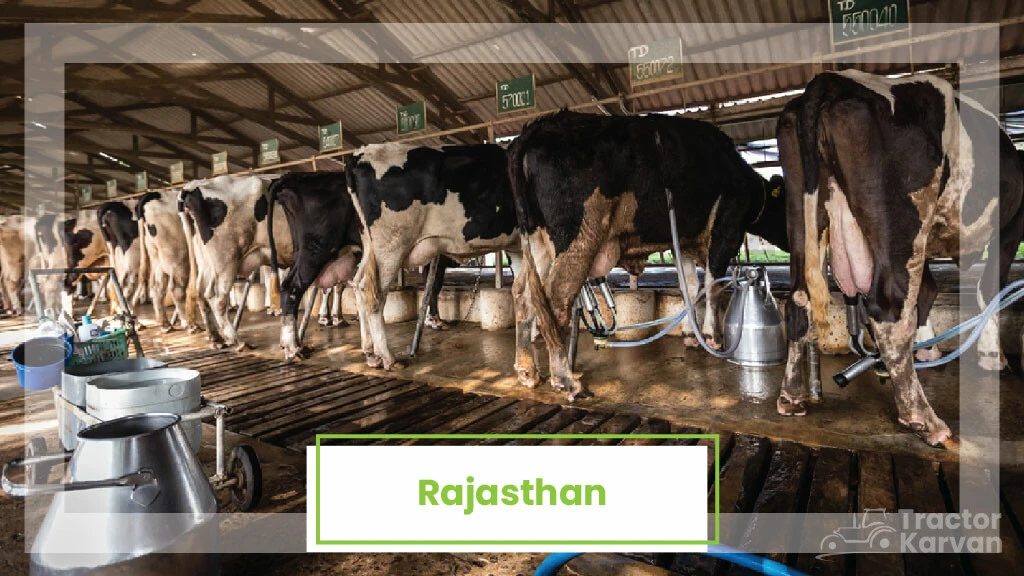
Rajasthan ranks second in the list of the top 10 milk producing states in India. It makes up around 14.45% or 33.31 million tonnes of India's total milk production. The total population of adult female bovines in the state was 13.84 million in 2019.
Rajasthan Cooperative Dairy Federation (RCDF) has significantly contributed to making milk and its products in Rajasthan famous across India. In 2019, Mukhyamantri Dugdh Utpadak Sambal Yojana was started in the state to increase milk production and improve the financial condition of those involved in rearing cattle.
Madhya Pradesh
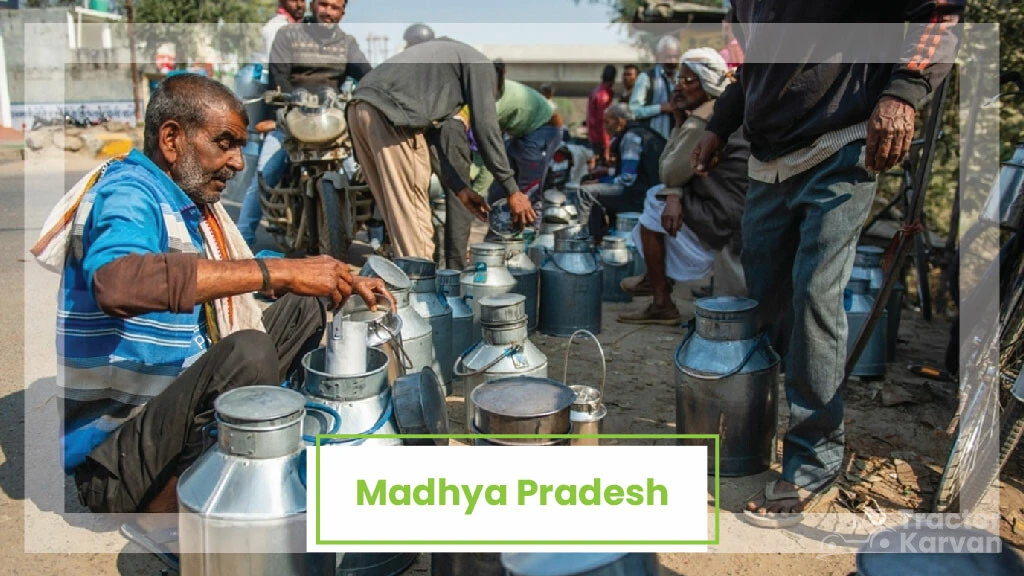
The key reason behind milk production in Madhya Pradesh is observed to be animal husbandry. This state has produced 20.12 million tonnes of milk, which is around 8.73% of the total milk production in India. There are 12.64 million adult female bovines in the state.
MP State Cooperative Dairy Federation ensures the best interest of milk-producing farmers and provides high-quality milk and products at reasonable prices. Also, the state government has decided to give incentives in the form of Rs. 5 for every litre of milk produced by farmers. This initiative has been approved with a yearly budget of Rs 200 crore.
Gujarat

Gujarat has a total milk production of 17.28 million tonnes, with a total share of 7.49% in India. Amul is a famous cooperative society from Gujarat popular worldwide for its milk and related products. The state has 126 Collection Centers, 19288 Milk Producers Cooperative Societies and 19 Dairy Processing Units functional at the district level. The number of total adult female bovines in 2019 was 5.14 million.
Twenty-seven dairy units under the Milk and Milk Products Act 1992 are registered with the state government. During 2022-23, Milk Producer Cooperative Societies of the state were involved in several activities, including the treatment of milch cattle, vaccination and artificial insemination.
Andhra Pradesh
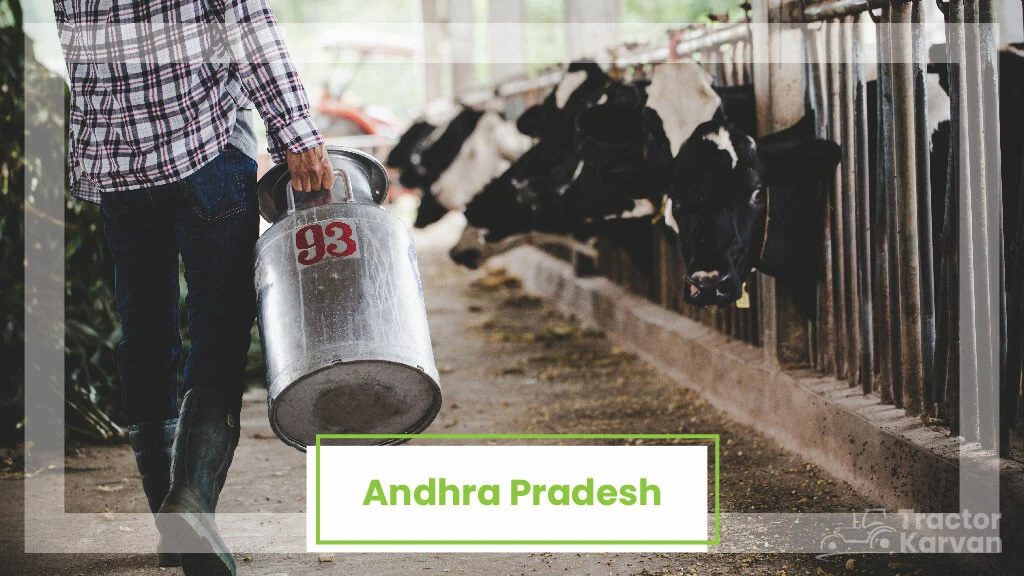
Andhra Pradesh is among the leading producers of milk in India, with 15.45 million tonnes. Its share of the total milk production is 6.70%. The major contributor to total milk production in Andhra Pradesh is buffalo milk. The top districts in milk production include East Godavari, Chittoor, Guntur, Prakasam and Krishna.
In 2020, the Andhra Pradesh Dairy Development Cooperative Federation Limited (APDDCF) was started in collaboration with the Gujarat Cooperative Milk Marketing Federation. Its goal is to empower women from rural regions and strengthen the dairy sector. AP Milk Procurement & Enforcement of Safety of Milk Standards Act was enforced in 2023 to regulate milk procurement.
The pragmatic policies of the state government have achieved high milk production. It involves the supply of fodder, Total Mixer Ration (TMR) and silage at subsidy prices. This allows farmers to make higher profits. Also, the OoruraPasugrasam scheme encourages farmers to take up growing grass extensively so that there is no shortage of fodder.
Maharashtra
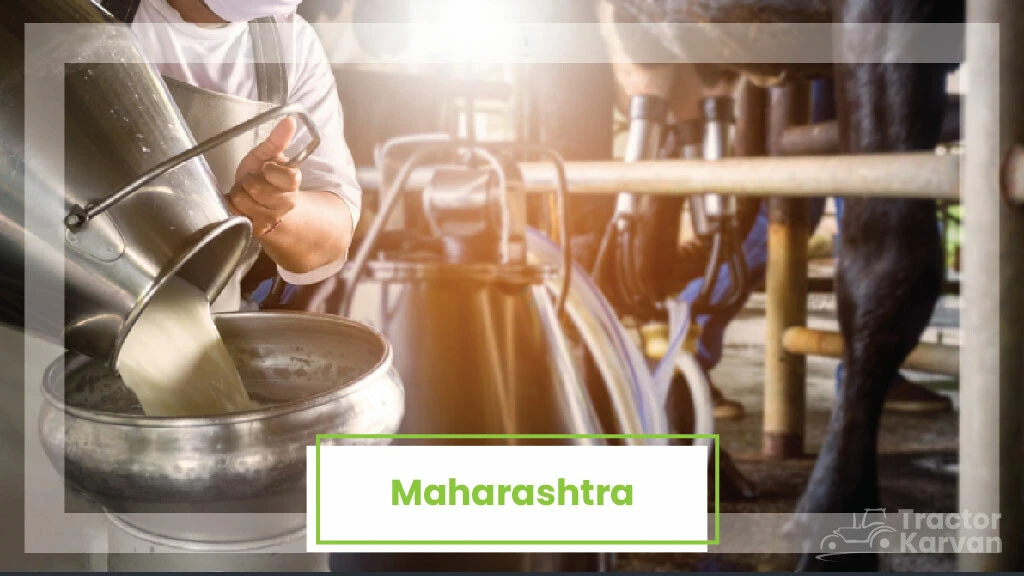
Maharashtra is sixth, with a total milk production of 15.04 million tonnes and a share of 6.52%. The leading milk-producing districts are Ahmednagar, Pune, Solapur, Kolhapur and Sangli. Also, the population of adult female bovines stood at around 9 million in 2019. The state had 11,219 dairy cooperative societies that were functional in 2023.
The Maharashtrian government offered a Rs 5 per litre subsidy to producers supplying milk to cooperative dairies. Under the Rashtriya Gokul Mission (RGM), the state has been taking steps like artificial insemination, breeding multiplication farms, and genomic selection to develop and conserve indigenous breeds.
Punjab
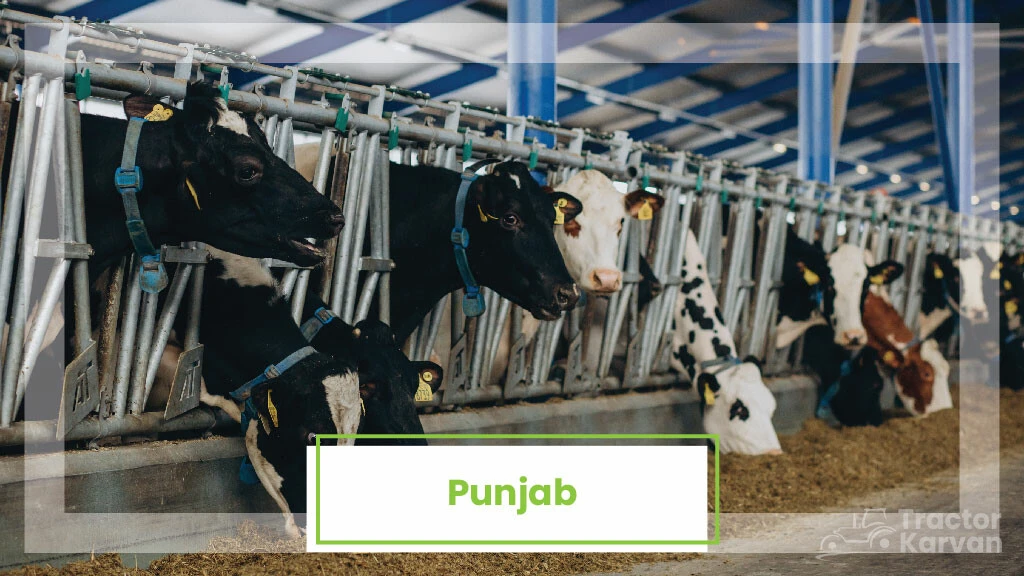
Punjab produced a total milk volume of 14.30 million tonnes. It makes up 6.20% of the total milk production in India. The Dairy Development Department was established in 1964 for dairying development in Punjab. DD8 scheme was launched by the state government to set up new dairy units and achieve sustainable employment generation and livestock. Also, it offers financial support for purchasing 2-20 milk animals.
The total population of adult female bovines in Punjab was 3.80 million in 2019. The improvement in milk production is mainly attributed to improved quality of fodder and milch animals, crossbred cows and commercialised milk production.
Karnataka

Karnataka has a total milk production of 12.83 million tonnes, which brings its share to 5.56%. The total number of cows and buffaloes in the state was 5.73 million in 2019. The increased milk production is the result of increasing demand in the urban regions.
Karnataka is known for its dairy cooperatives and integrated dairy development programs. Karnataka Cooperative Milk Producers' Federation Limited (KMF) leads the procurement and selling of milk in South India. Nandini is a famous brand of milk and related products in the state. 16 Milk Unions come under KMF, which covers all Karnataka districts via Primary Dairy Cooperative Societies (DCS). The adoption of scientific farming practices, cattle health and nutrition promotion and access to credit facilities have significantly contributed to Karnataka's milk production growth.
Bihar
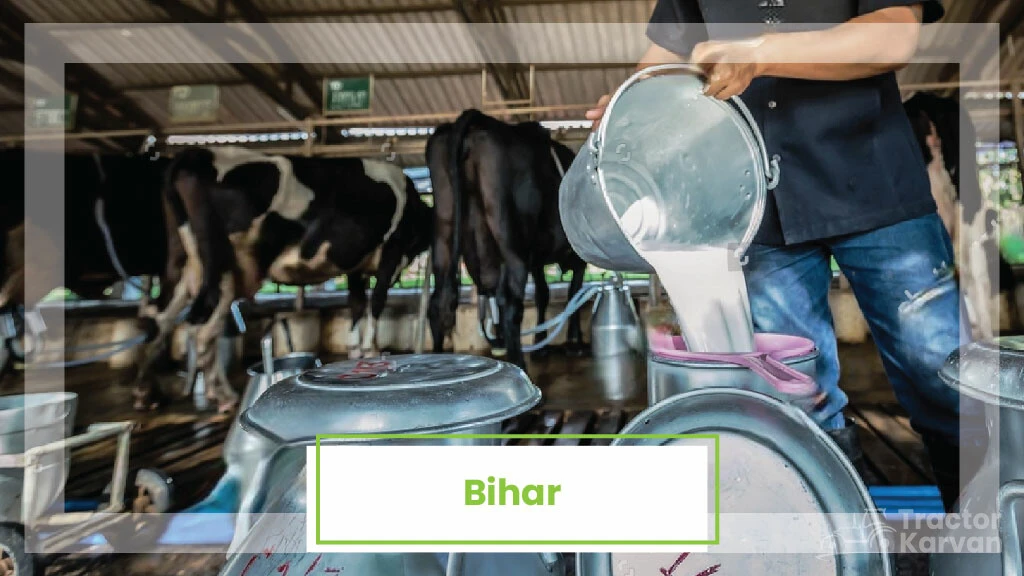
For 2022-23, the milk production of Bihar was 12.50 million tonnes or 5.42% of the total milk produced in India. It is mainly because of its flourishing milk cooperative sector. As it is an agrarian state, it houses a large agricultural and animal production base. In 2019, the total number of cows and buffaloes was 10.82 million in Bihar.
In 1983, COMFED or the Bihar State Milk Cooperative Federation Limited, was formed to develop the dairy sector based on the Anand pattern. This pattern allows a cooperative structure to procure, process and market the produce. COMFED has an extensive range of products under the ‘SUDHA’ brand. Farmer’s Training Centres are available in Begusarai, Barauni, and Patna to train society functionaries and milk producers in different areas of dairying, such as artificial insemination and clean milk production.
Haryana
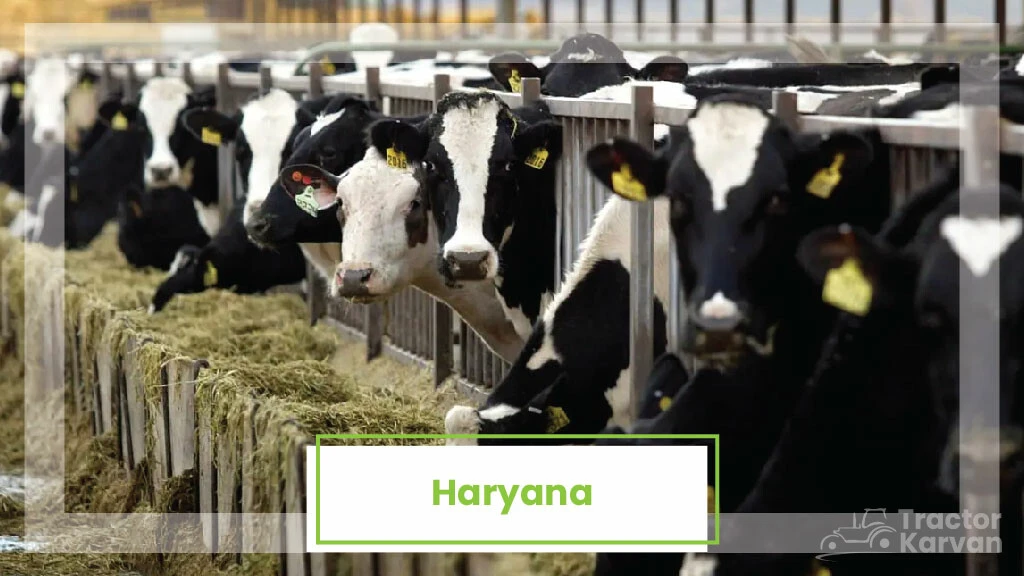
Haryana has made significant strides in milk production by encouraging farmers to adopt improved breeds and techniques. Its milk production amounted to 11.97 million tonnes in 2022-23. The state has a share of 5.19% of India's total milk production. The per capita per day milk production has rapidly increased in Haryana due to the intensification of programs aimed towards artificial insemination in buffaloes and cows. In 2019, the total number of cows and buffaloes in the state was around 3 million.
The state government introduced a scheme to establish hi-tech and mini dairy units in 2023-24. It aims to increase the production of milk and dairy products and create more employment opportunities. Other key initiatives include awareness drives and schemes to improve the rearing of animals. Haryana's efforts to ensure the availability of high-quality feed, develop cooperative models and enhance breed management have driven the growth of its dairy sector.
Milk production in India is essential for fulfilling nutritional needs, generating rural employment and contributing to the overall economy. Breed improvement, infrastructure development, cooperative models and increasing market demand drive dairy farming businesses in different states.
Frequently Asked Questions On Top 10 Milk Producing States in India 2025
1. Which state is called milk bowl of India?
Uttar Pradesh is called milk bowl of India.
2. Which is the highest milk producing state in India?
Uttar Pradesh is the highest milk producing state in India.
3. What is the rank of Maharashtra in producing milk?
Maharashtra is in the 6th position in producing milk.
4. What is the rank of Rajasthan in producing milk?
Rajasthan is in the 2nd position in producing milk.


Related Blogs












